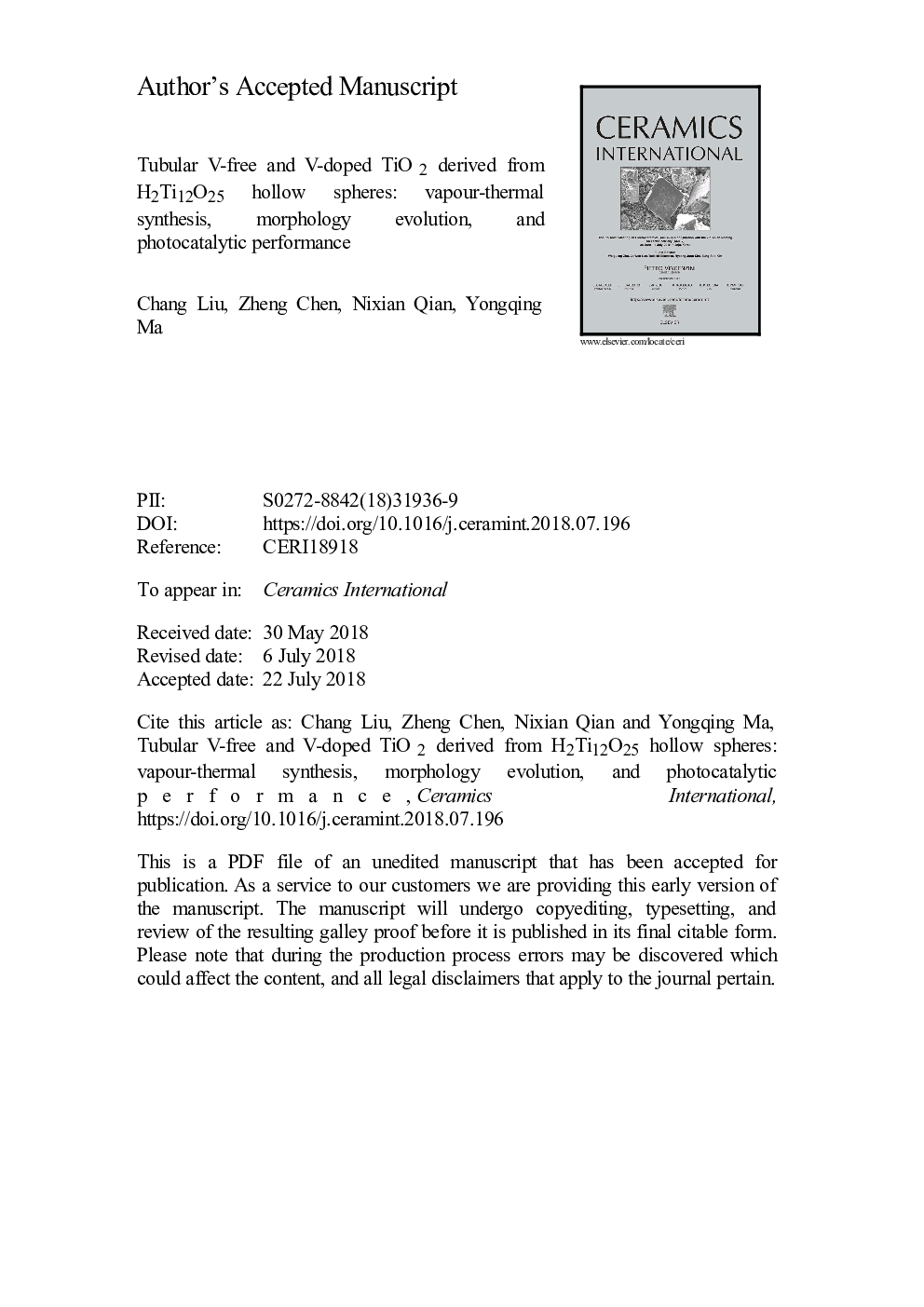| Article ID | Journal | Published Year | Pages | File Type |
|---|---|---|---|---|
| 10155420 | Ceramics International | 2018 | 28 Pages |
Abstract
Vanadium (V)-free and V-doped H2Ti12O25 hollow spheres (HTOHSs) were first synthesised via vapour-thermal method at 290â¯Â°C using common chemicals and solvents, over super-critical temperature (243â¯Â°C) of ethanol (vapour source). Then, they were annealed at 600â¯Â°C under different processing conditions to obtain titanium dioxide (TiO2) photocatalysts. All catalysts were characterised by means of XRD, SEM, TEM, XPS, UV-vis DRS, FT-IR, N2 adsorbtion-desorbtion and fluorescence lifetime. Results indicated that after the treatment in air, V-free HTOHSs were transformed into open-ended hollow tubes with uniform length of ~5â¯Âµm and diameter of ~1â¯Âµm, and walls of hollow tubes consisted of aggregated nanosheets. Furthermore, HTOHS crystallised into anatase TiO2 (white) phase. The treatment in N2 atmosphere led to the breaking of longer tubes into shorter ones. In contrast, after the treatment in N2 atmosphere or by reduction using NaBH4 as a reductant, V-doped HTOHS resulted in the formation of anatase TiO2 (black) samples and consisted of fewer tubes and more deformed spheres. In this study, fluorescence lifetime (Ï) of photo-generated carriers corresponded well with the ratio of oxygen vacancy, indicating that oxygen vacancy dominates the lifetime even though it is very sensitive to many factors. The evolution of structure and morphology and photocatalytic mechanism were analysed and discussed.
Keywords
Related Topics
Physical Sciences and Engineering
Materials Science
Ceramics and Composites
Authors
Chang Liu, Zheng Chen, Nixian Qian, Yongqing Ma,
